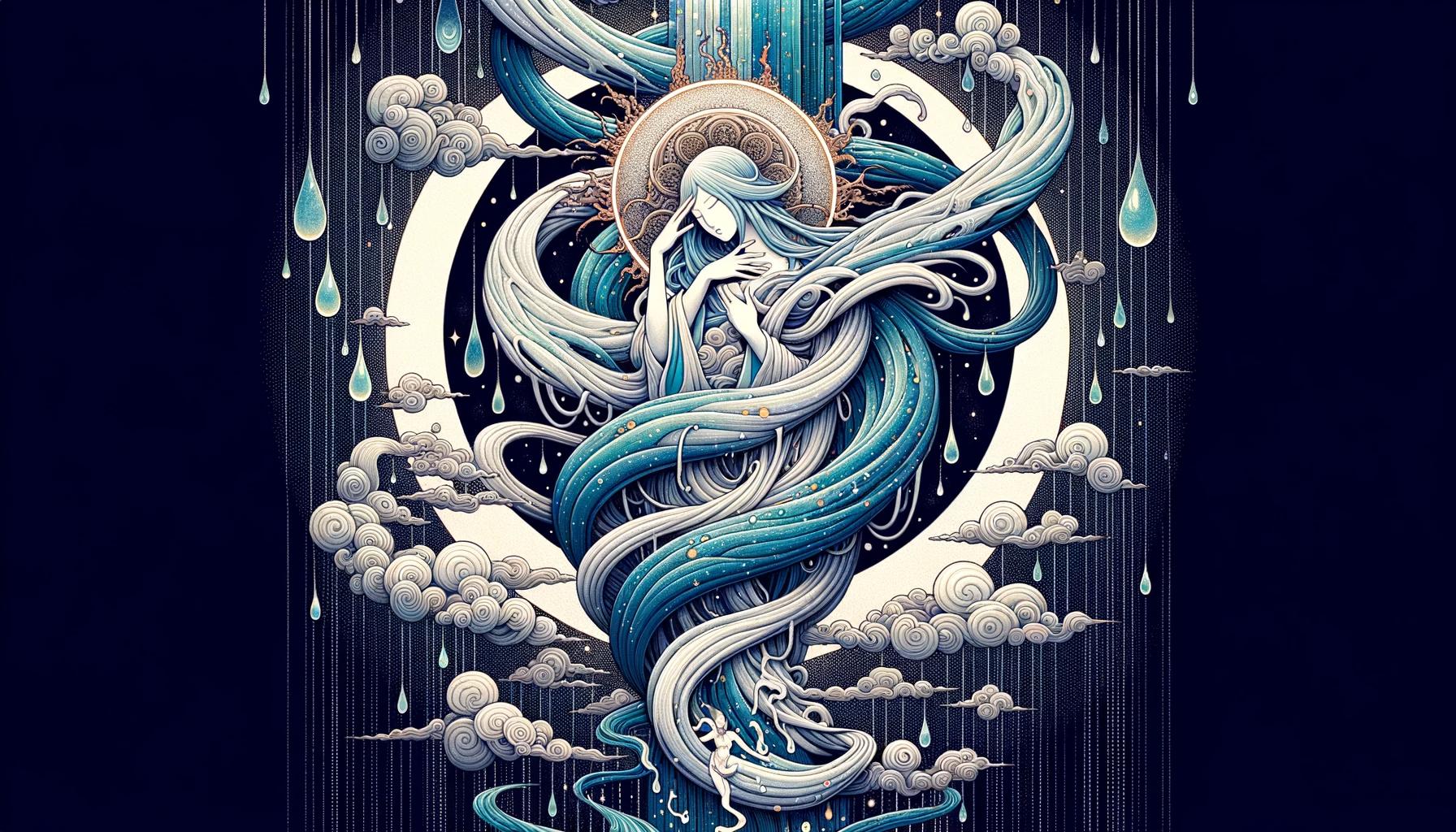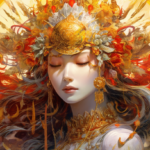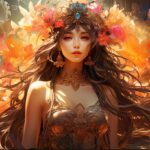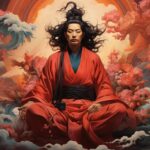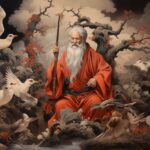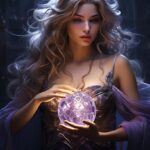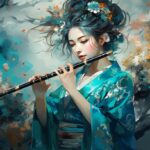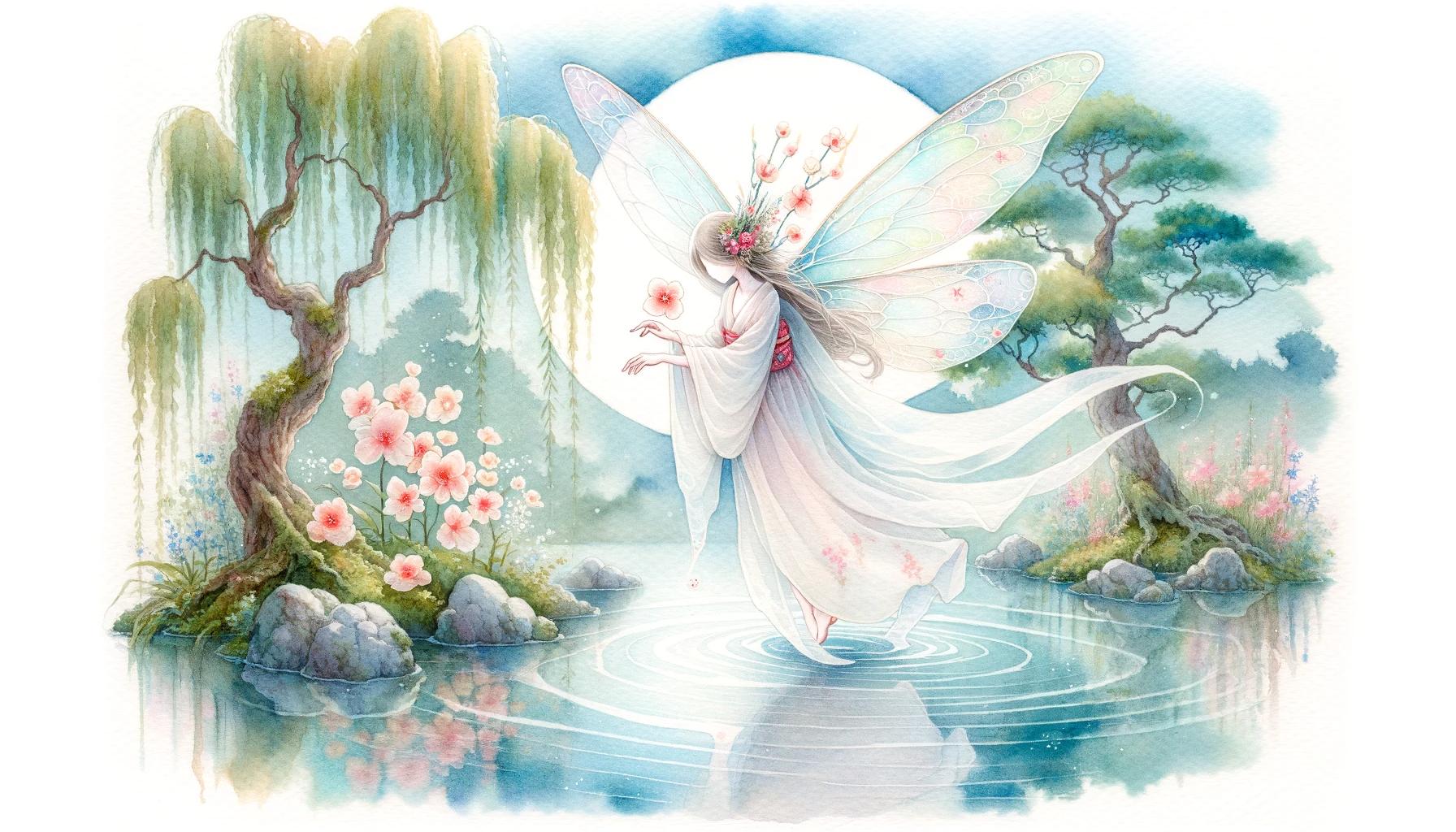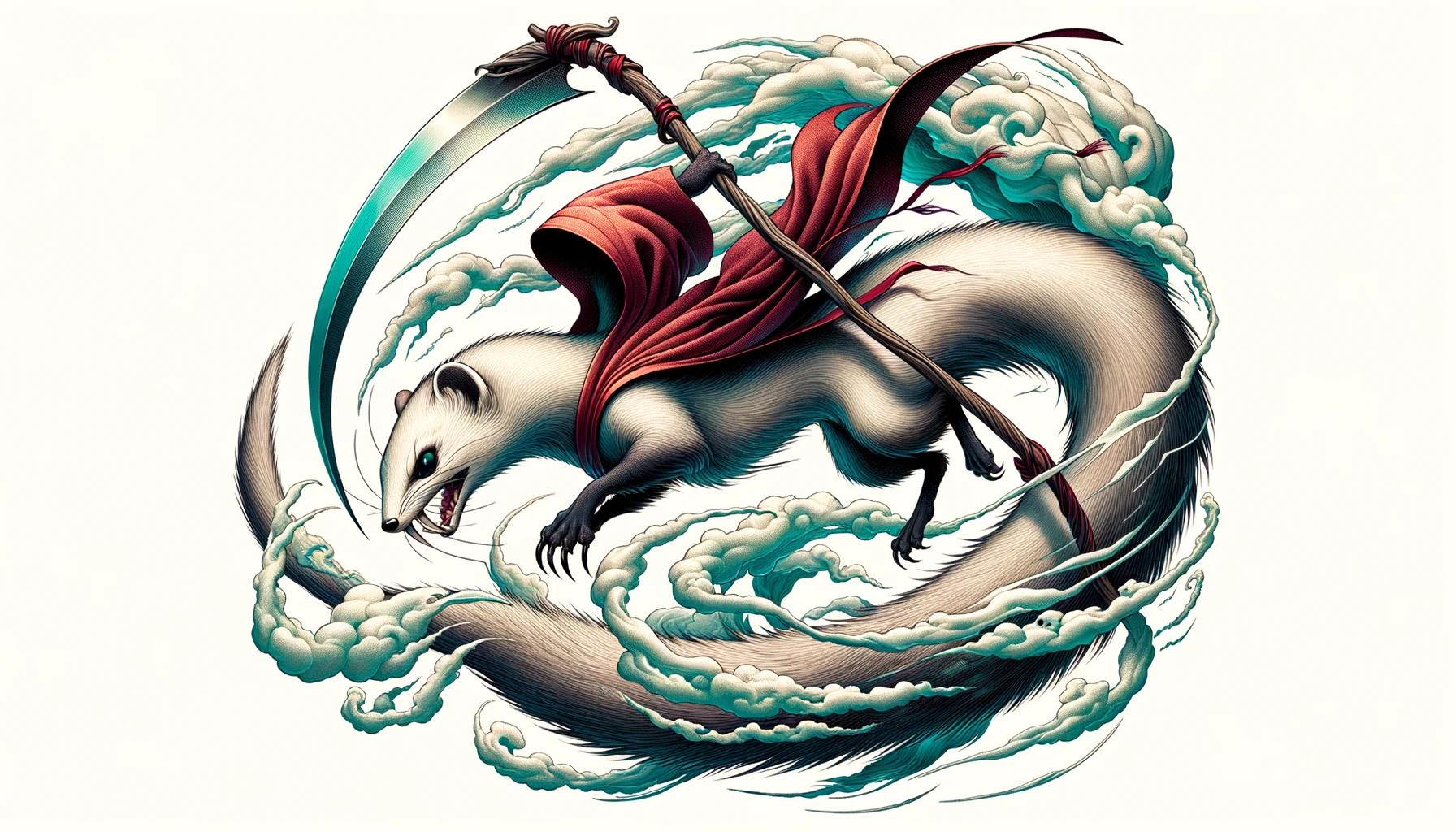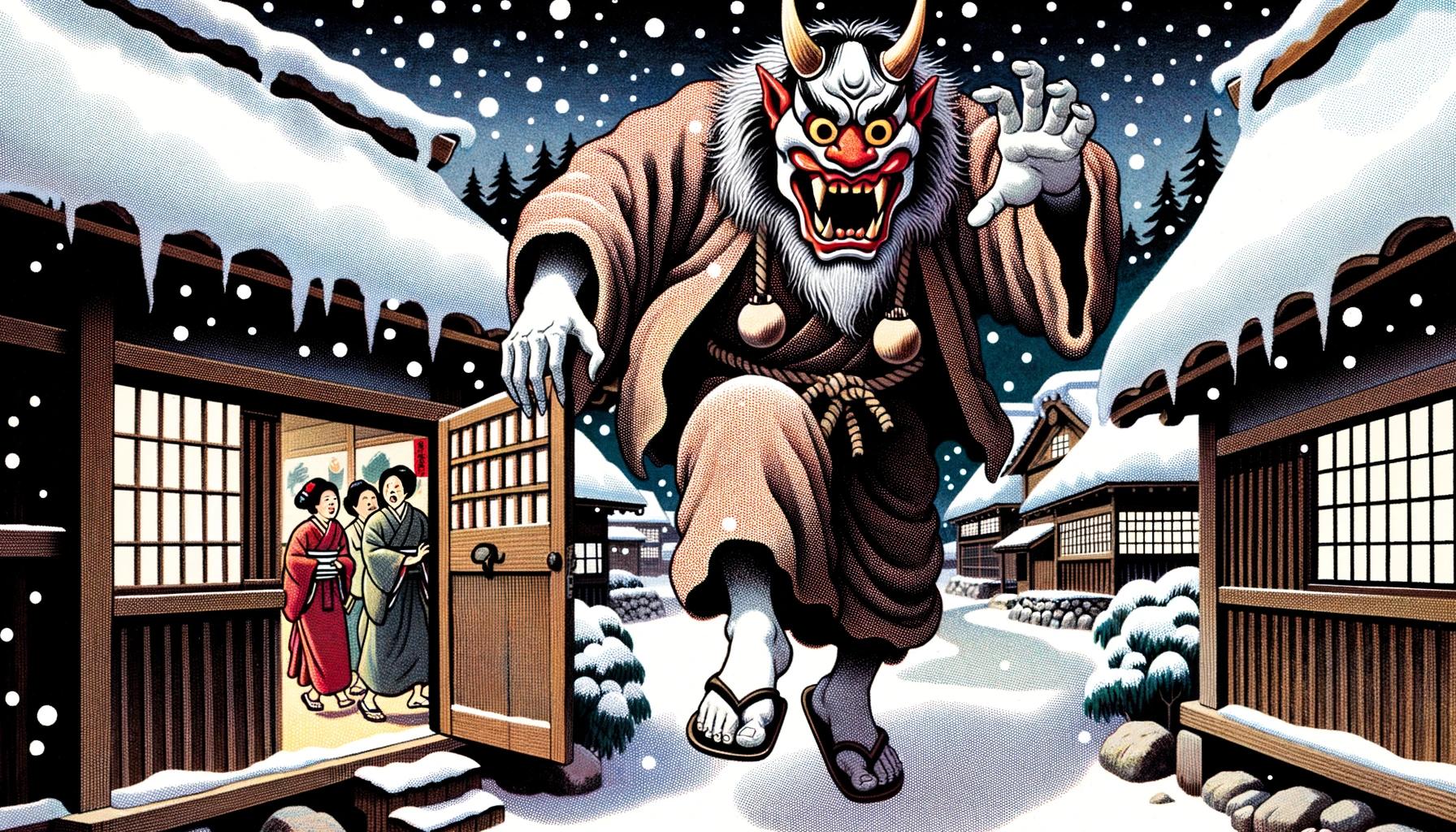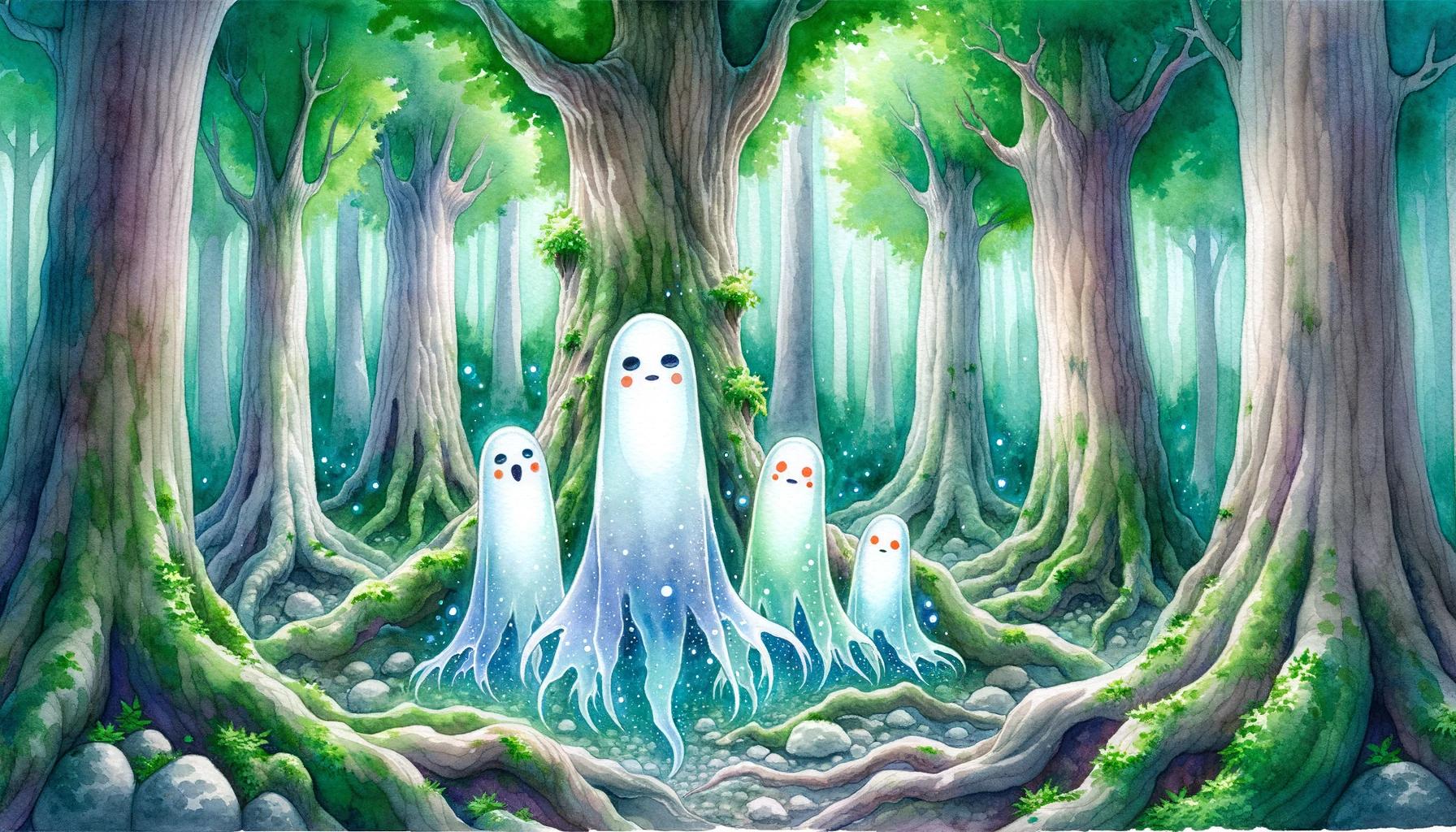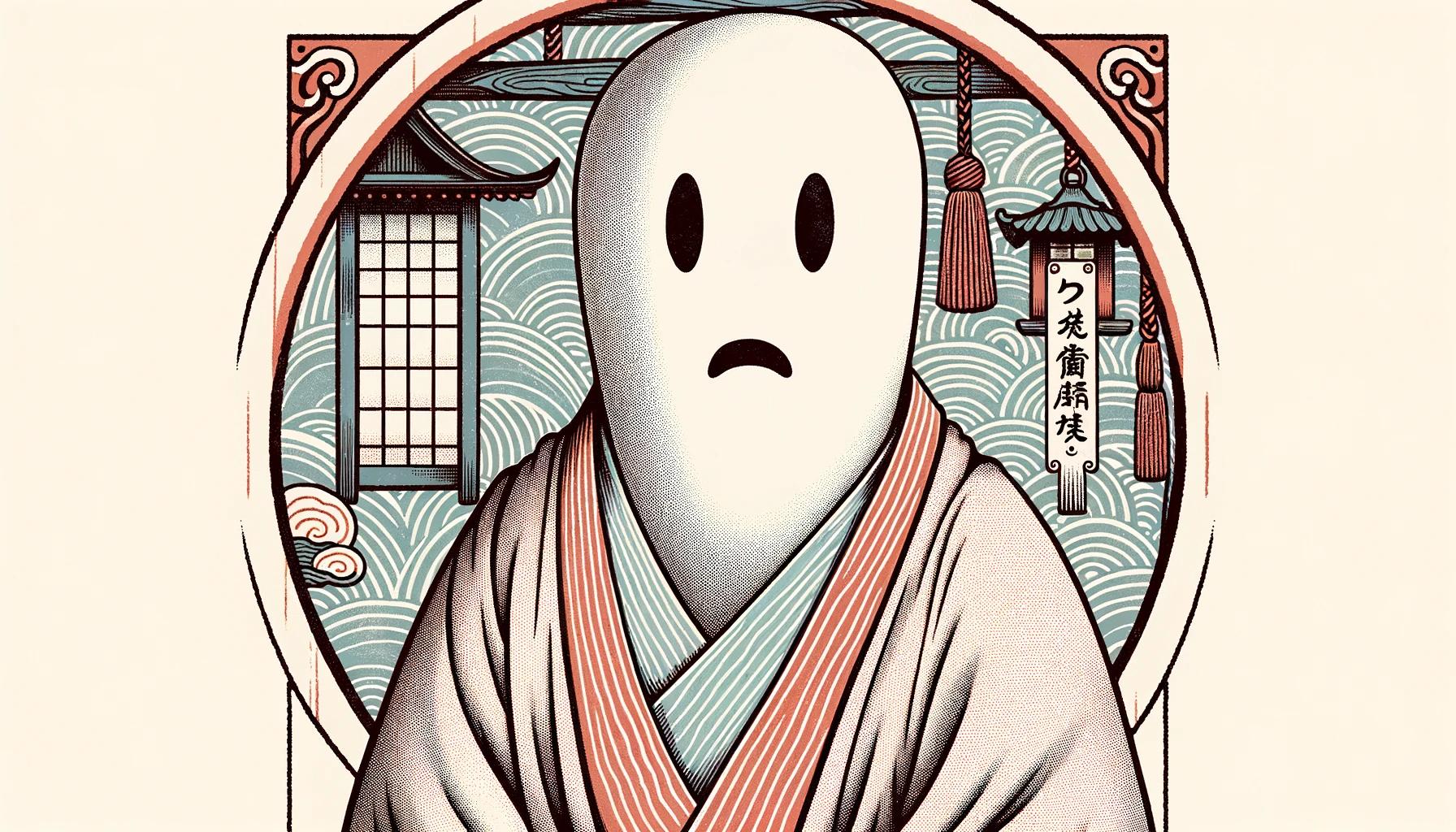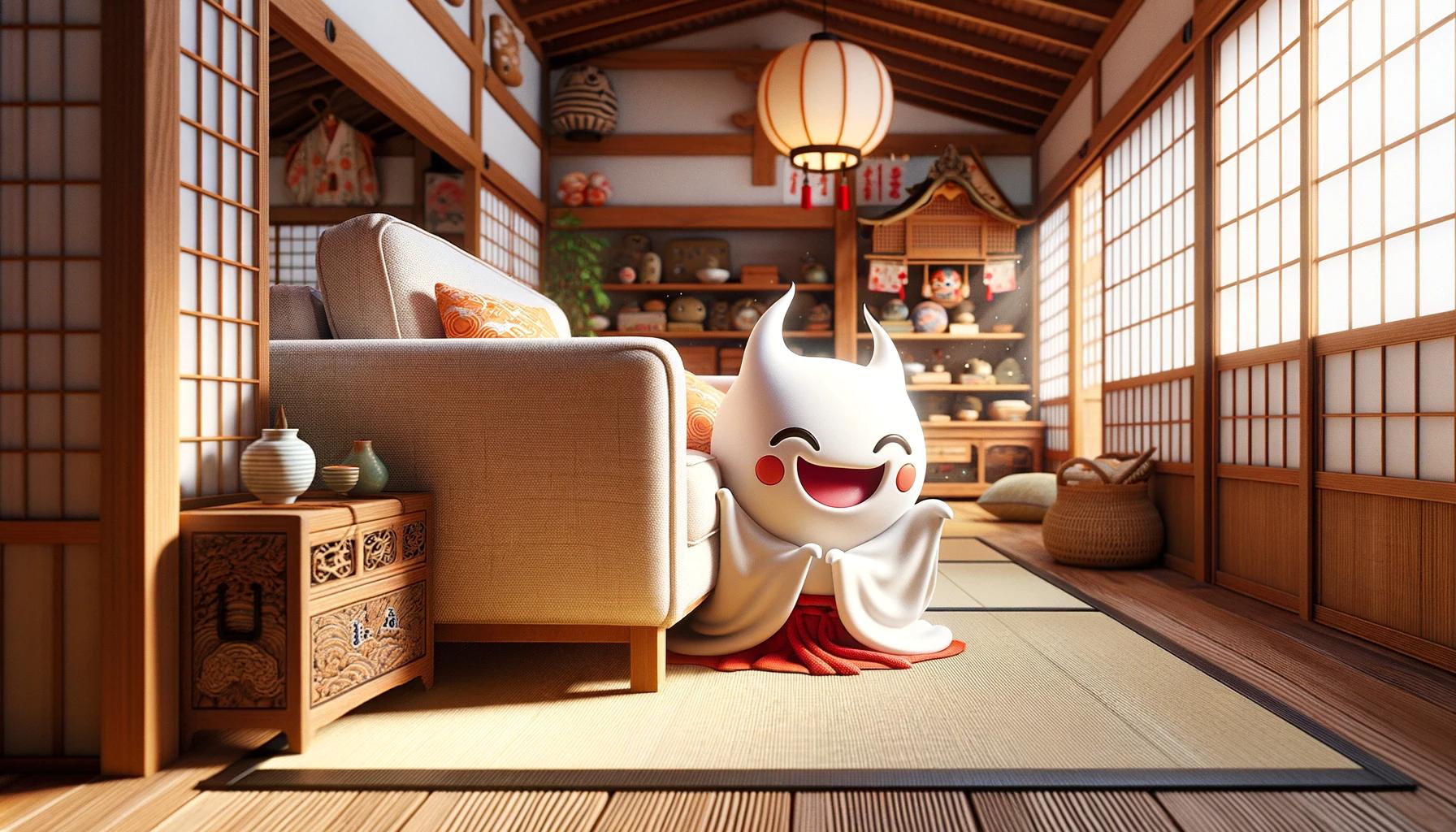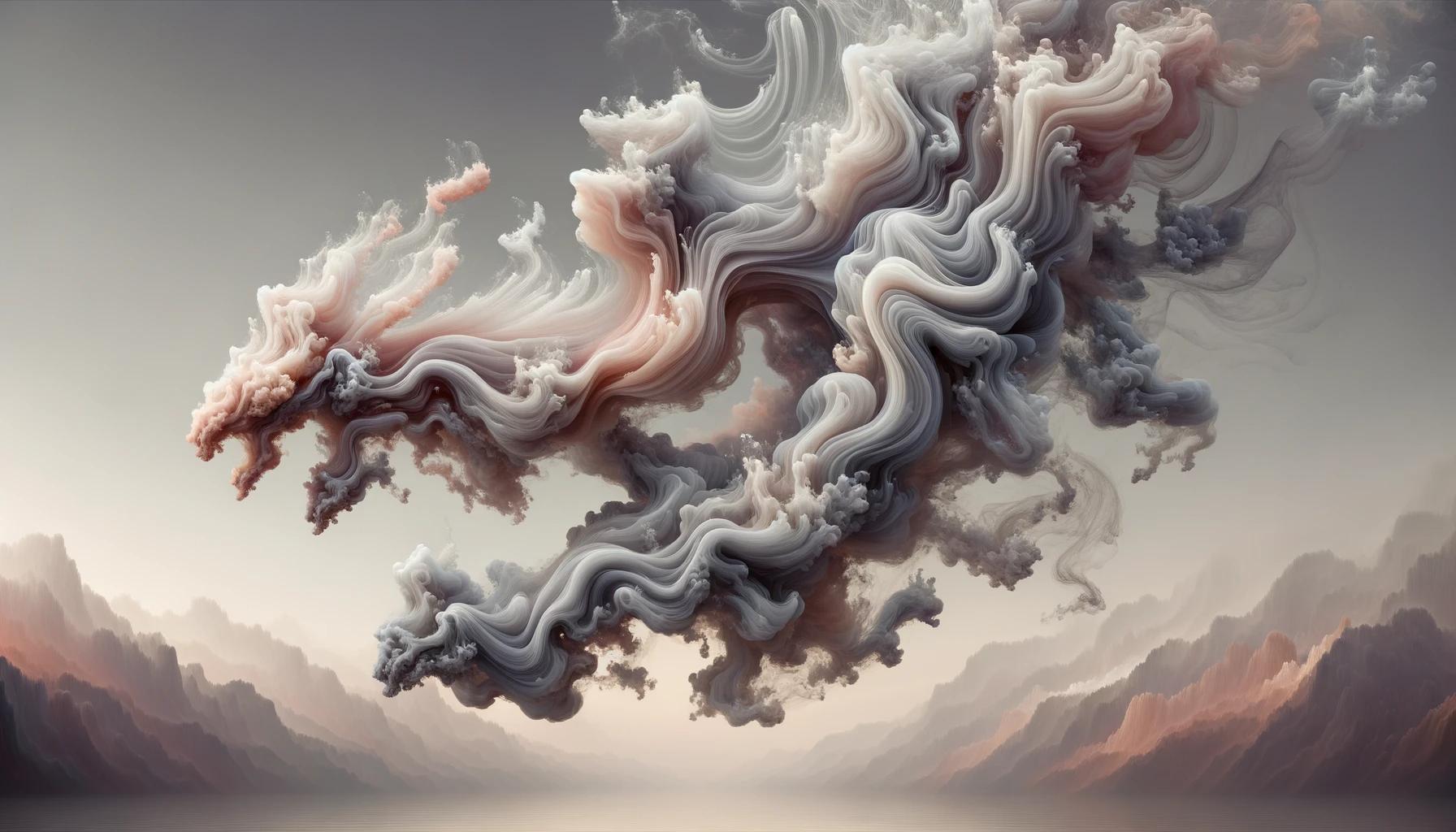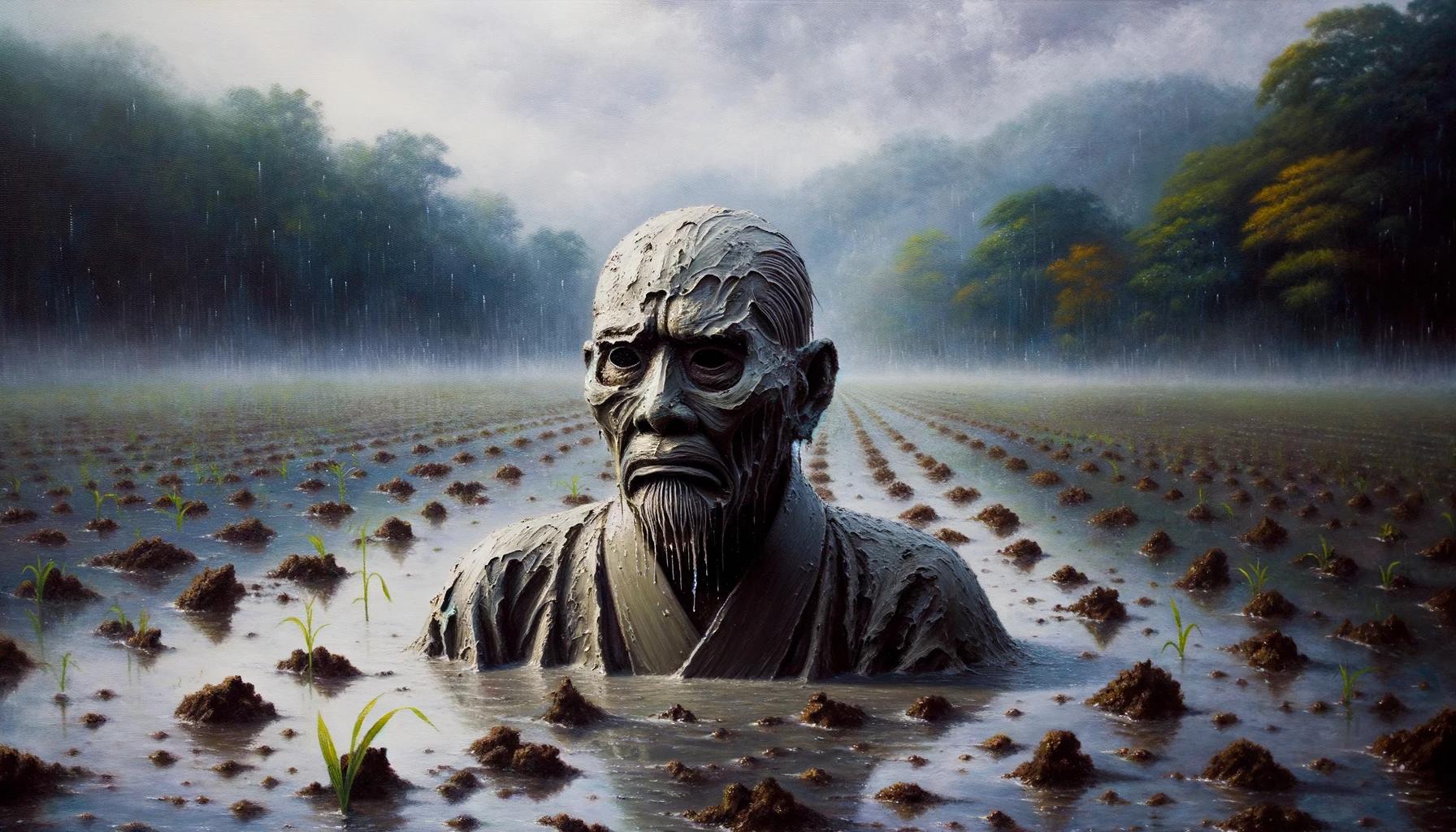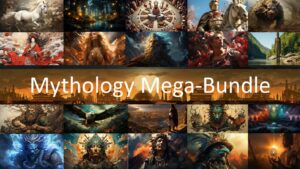Ame Onna Japanese Mythology: Unveiling the Sinister Creatures of Japanese Folklore
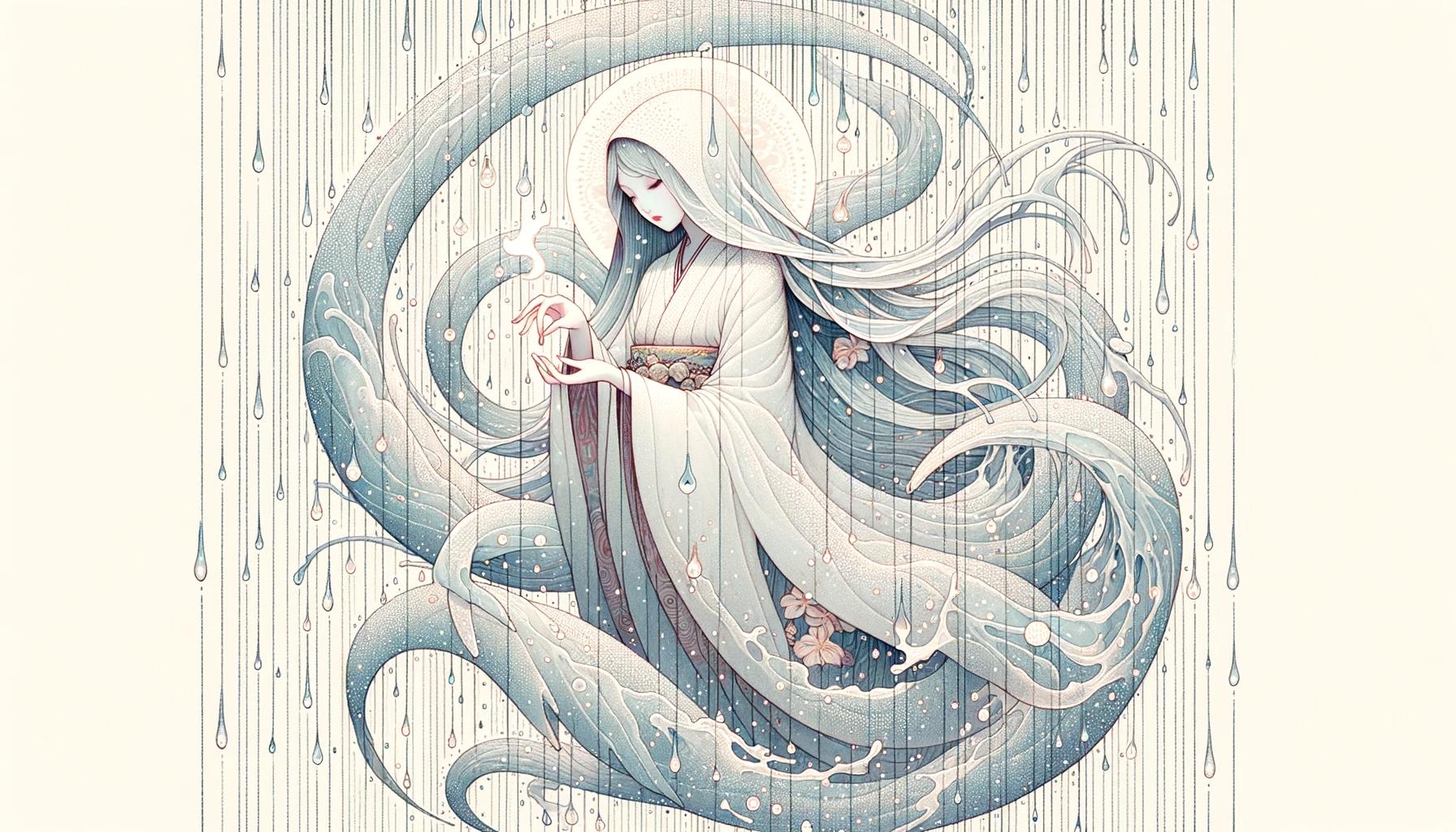
Ame Onna, a type of yokai in Japanese mythology, is a sinister creature that appears on rainy days and nights. They possess the ability to summon rain wherever they go and are blamed for the kidnapping and disappearance of children.
Described as depraved and ragged women, soaked in rainwater, Ame Onna roam towns and villages in search of newborn girls. The legends suggest that grieving mothers sometimes transform into Ame Onna themselves, driven by sadness and desperation.
These transformed women wander the streets at night, hoping to replace what was taken from them.
Ame Onna: Unveiling the Sinister Rain Women of Japanese Mythology
The enigmatic Ame Onna, dwellers of rainy days and nights, are a fearsome type of yokai that fascinate and terrify in equal measure. Their ability to summon rain wherever they go is a harbinger of both prosperity and nefarious deeds.
In this section, we delve into the origins, beliefs, and dark purpose surrounding these mysterious creatures, shedding light on their haunting presence in Japanese mythology.
Origins and Background of Ame Onna
Ame Onna traces its roots back to ancient Japanese and Chinese religious beliefs.
In bygone times, rains were believed to be bestowed upon the earth by benevolent rain deities, who traversed the skies as clouds in the morning and descended as raindrops upon sundown.
However, some of these divine beings took a darker turn, giving rise to the malevolent Ame Onna. We examine the historical backdrop that set the stage for the emergence of these sinister rain women.
Mythical Beliefs Surrounding Ame Onna and Rain Deities
Unlike their benevolent rain deity counterparts, Ame Onna emerge from the shadows with a foreboding purpose. Our exploration takes us deeper into the mythical beliefs that surround the relationship between Ame Onna and rain deities.
We uncover the dichotomy between their potential to bring life-giving rain to parched lands and the sinister undercurrents that pervade their actions, particularly in relation to child abduction.
The Dark Purpose of Ame Onna: Kidnapping Children and its Consequences
Beneath their sodden exterior, Ame Onna harbor a sinister objective: the kidnapping of children.
The consequences of their actions resonate throughout Japanese folklore. We unravel the disturbing tales of Ame Onna’s nightmarish abductions, leaving communities in fear and mourning. Moreover, we explore the tragic repercussions that drive grieving mothers to transform into Ame Onna themselves, perpetuating the cycle of despair and loss.
Ame Onna in Japanese Folklore: Legends and Stories
Explore the captivating tales and stories surrounding Ame Onna, the sinister rain women of Japanese mythology. From the chilling abduction of newborns to the haunting presence of these supernatural beings, this section unveils the intriguing legends associated with Ame Onna.
Tales of Ame Onna’s Abduction of Newborns
Dive into the dark and chilling accounts of Ame Onna’s abduction of newborns. According to folklore, these sorrowful creatures roam through towns and villages, seeking out freshly born infants. Discover the eerie details of their encounters and the mysterious fates that befall those unfortunate children.
Transformation of Grieving Mothers into Ame Onna
Uncover the tragic transformation of grieving mothers into Ame Onna. Driven by profound sadness and despair, these bereaved women succumb to the darkness, becoming part of the malevolent ranks of Ame Onna themselves.
Learn about the harrowing journey these transformed beings embark upon, compelled to seek solace and vengeance.
Ame Onna’s Haunting Presence: Nighttime Thievery and Rain Invocation
Delve into the ominous presence of Ame Onna during the night, as they carry out their thievery under the cover of darkness. Learn about their uncanny ability to invoke rain and how they exploit this power to fulfill their sinister intentions.
Discover the eerie rituals and behaviors associated with Ame Onna as they traverse the streets, shrouded in mystery and soaked in rain.
Ame Onna: Characteristics, Appearances, and Traits
Ame Onna, the sinister rain women of Japanese mythology, possess unique characteristics and traits that set them apart in the world of yokai. This section delves into their descriptions, powers, and their relationships with other yokai and mythological beings.
Descriptions of Ame Onna: Depraved, Drenched, and Wild
Ame Onna is depicted as depraved and harrowed women, perpetually soaked in rainwater. Their disheveled appearance mirrors their sorrowful existence as they roam through villages and towns. Licking rainwater from their hands and arms like feral creatures, their wild behavior adds to the eerie aura surrounding them.
Powers and Abilities of Ame Onna: Rain Manipulation and Other Traits
Beyond their haunting appearance, Ame Onna possess supernatural abilities tied to rain manipulation. With a mere thought, they can summon rain wherever they go, bringing forth torrential downpours or gentle drizzles.
This unique power not only reflects their connection to the rain deities but also serves their sinister purpose of kidnapping children under the cover of rainfall. Additionally, legends suggest that Ame Onna may have other inexplicable traits and powers yet to be fully understood.
Ame Onna’s Relationship with Other Yokai and Japanese Mythological Beings
Within the vast realm of Japanese folklore, Ame Onna exists alongside numerous other mythical beings. They share a complex relationship with other yokai, rain deities, and creatures from various tales. Though not benevolent like rain gods, Ame Onna may have overlapping roles or intersecting narratives that unveil interconnectedness amidst the rich tapestry of Japanese mythology.
Cultural Significance and Historical Context of Ame Onna
The cultural significance of Ame Onna in Japanese mythology cannot be understated. This sinister yokai holds deep roots in ancient Japanese and Chinese religions, where rain deities played a crucial role in people’s lives.
In the context of Ame Onna, the influence of these ancient beliefs becomes apparent, shaping the perception of rain and its connection to supernatural beings.
Influence of Ancient Japanese and Chinese Religions
Ame Onna’s origins can be traced back to the ancient beliefs in rain deities that resided as benevolent gods and goddesses, traveling between the sky and the earth. These deities were thought to control the rainfall and ensure the well-being and prosperity of communities.
Ame Onna emerged as a contrasting presence, embodying the torment of infertility and loss. This contrast showcases the complex interplay between ancient Japanese and Chinese religious influences and the evolution of Ame Onna as a malevolent force.
Ame Onna’s Impact on Japanese Society and Folklore
- Perception of Rain: Ame Onna’s association with rain and its uncanny ability to bring forth rainfall has embedded a sense of fear and unease in Japanese society. Rainy days and nights are often seen as prime moments for Ame Onna’s appearance, adding an element of mystery and danger to natural weather phenomena.
- Protecting Children: The story of Ame Onna preying on newborns resonated deeply within Japanese society, resulting in a heightened awareness and protective nature towards children.
Parents and communities have long held rituals and traditions to ward off Ame Onna’s influence and safeguard their little ones.
- Literary and Artistic Depictions: Over the years, Ame Onna has captured the imagination of writers, artists, and filmmakers, becoming a recurring motif in literature, visual arts, and popular culture.
These depictions explore the psychological and emotional aspects of motherhood, loss, and the human struggle against supernatural forces.
Representations of Ame Onna in Art, Literature, and Popular Culture
Ame Onna’s chilling presence has found its way into various forms of artistic expressions. Japanese literature often weaves tales of Ame Onna’s abduction of infants, evoking a sense of horror and despair.
Paintings and illustrations depict Ame Onna as disheveled and soaked figures, capturing their eerie appearance and their connection to rain. In modern times, Ame Onna’s influence can be seen in anime, manga, and horror movies, further solidifying her position as a formidable figure in Japanese popular culture.
Frequently Asked Questions about Ame Onna Japanese Mythology
What is the origin of Ame Onna in Japanese mythology?
Ame Onna, the sinister rain women of Japanese mythology, have their origins in ancient Japanese and Chinese religious beliefs. According to legends, rain was brought by benevolent deities who transformed into Ame Onna.
These deities, once associated with the blessings of rain, became tormentors themselves, unable to have children and mourning the loss of their loved ones. Thus, Ame Onna emerged as a haunting presence associated with rainy nights, kidnapping newborn children.
How are Ame Onna portrayed in Japanese folklore?
In Japanese folklore, Ame Onna are depicted as depraved, ragged women drenched in rainwater. These creatures roam the towns during rainy days and nights, carrying an air of eerie sadness with them.
The legends describe them as licking the rain off their hands and arms, resembling wild animals in their actions. They are linked to minor rain deities but, unlike the benevolent gods, Ame Onna have a sinister purpose: to snatch away newborn children under the cover of rain and take them to another realm.
What are the powers and abilities of Ame Onna?
Ame Onna possess the power to invoke rain wherever they go. They can manipulate the weather, bringing rains that may either save a drought-ridden village or bring fortune to farmers. With their supernatural abilities, Ame Onna are capable of silently infiltrating houses where the cries of children can be heard, snatching them away into the darkness.
Their actions are driven by a deep sorrow and desperation, which fuels their relentless search for replacement for the children they have lost.
Are there any real-life incidents or sightings of Ame Onna?
There have been no recorded real-life incidents or sightings of Ame Onna in contemporary times.
However, their presence in Japanese folklore and mythology continues to captivate the imagination of the people. Many tales and stories have been passed down through generations, depicting encounters with these eerie rain women and the dire consequences of crossing their paths.
How has Ame Onna influenced modern culture in Japan?
Ame Onna’s chilling presence and their association with rainy nights have left a lasting impact on Japanese culture. They have become a popular subject in various art forms, including literature, movies, and anime.
Ame Onna’s depiction as haunting figures who kidnap children has been used as a plot device in many stories. Their representation serves as a reminder of the darkness that can hide beneath the seemingly innocent facade of rain, adding an element of mystery and danger to modern interpretations of Japanese folklore.
- What is the origin of Ame Onna in Japanese mythology?
- How are Ame Onna portrayed in Japanese folklore?
- What are the powers and abilities of Ame Onna?
- Are there any real-life incidents or sightings of Ame Onna?
- How has Ame Onna influenced modern culture in Japan?
Fan Feed: Exploring Related Yokai and Japanese Mythological Beings
Welcome to the Fan Feed, where we delve into the fascinating world of yokai and Japanese mythological beings.
Get ready to immerse yourself in the intriguing legends and creatures that have captured the imagination of people across generations.
Tanuki: The Mischievous Shapeshifting Yokai
One of the most iconic and beloved creatures in Japanese folklore, the Tanuki is a mischievous yokai known for its shape-shifting abilities. With a plump, jovial appearance, the Tanuki often takes the form of a raccoon dog and is associated with fertility, good fortune, and playful pranks.
Oni: The Malevolent Demons of Japanese Folklore
Beware the Oni, the malevolent demons that haunt Japanese folklore. With their fearsome horns, sharp fangs, and muscular bodies, Oni are often depicted as powerful and menacing beings. They are believed to bring chaos, disaster, and punishment to those who have committed evil deeds.
Kappa: The Aquatic Creatures of Japanese Rivers and Lakes
Deep in the waters of Japanese rivers and lakes, you may encounter the Kappa, amphibious creatures with a mischievous nature. These yokai are often depicted as humanoid beings with a turtle-like shell and a cavity on their head filled with water.
Known for their love of cucumbers and sumo wrestling, Kappa can be both helpful and treacherous to humans.
Yokai: An In-Depth Look into the World of Supernatural Beings
Step into the realm of yokai, a vast and diverse category of supernatural beings in Japanese mythology. Yokai represent everything from mischievous pranksters to vengeful specters, and their stories provide insight into the cultural beliefs and fears of ancient Japan.
Explore the different types of yokai and discover their captivating lore.
Key Takeaways:
- Tanuki are mischievous yokai known for their shape-shifting abilities.
- Oni are malevolent demons associated with chaos and punishment.
- Kappa are aquatic creatures with a penchant for cucumbers and sumo wrestling.
- Yokai encompass a wide range of supernatural beings in Japanese mythology.
Glossary of Terms
Key Terminology Related to Ame Onna and Japanese Mythology
As you explore the fascinating world of Ame Onna and Japanese mythology, understanding key terms can help enhance your knowledge and appreciation of these mystical entities.
Below are some important terms associated with Ame Onna and their context within the realm of Japanese folklore:
- Ame Onna: The sinistral rain women of Japanese mythology, often depicted as wretched, drenched beings who possess the ability to summon rain and are believed to abduct children.
- Yokai: A class of supernatural creatures in Japanese folklore that encompasses various entities, including Ame Onna, and are often associated with mysterious or mischievous activities.
- Rain Deities: Minor deities in Japanese and Chinese mythology who are traditionally believed to bring rain and ensure a bountiful harvest.
Ame Onna is linked to these deities due to their association with rainfall.
- Abduction: The act of forcefully taking someone, often against their will. Ame Onna are notorious for abducting newborn girls, as per the legends surrounding them.
- Grieving Mothers: Mothers who have experienced the loss of their children, leading them to a state of profound sadness and despair.
In some tales, these mothers may transform into Ame Onna themselves.
- Transformation: The process of changing from one form or state to another. Grieving mothers transforming into Ame Onna signifies a significant shift in their identities and purpose.
- Folklore: Traditional stories, legends, customs, and beliefs passed down through generations within a particular culture.
Ame Onna is an integral part of Japanese folklore, contributing to the rich tapestry of mythical beings in the country’s traditions.
- Supernatural: Pertaining to phenomena beyond the realm of scientific understanding or explanation.
Ame Onna, with their rain-summoning abilities and eerie presence, exemplify the supernatural elements prevalent in Japanese mythology.
These terms form the foundation for exploring Ame Onna and delving into the captivating realm of Japanese mythology.
By familiarizing yourself with these concepts, you can deepen your understanding and appreciation of this unique folklore.
.

